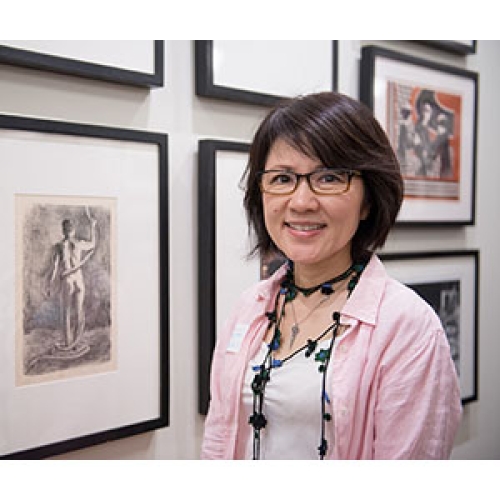
Born in Fukuoka, Japan, Mayumi Takagi has been active in the New York art scene since 1998. She is a painter, sculptor, and printmaker who explores both representational and abstract themes in her work. Takagi’s artwork focuses on the joy, mystery, and beauty found in life from household objects to the human form. She aspires to stimulate a “conversation” between the viewer and the object or figure portrayed.
Takagi has participated in numerous exhibitions in the United States and internationally. She has received multiple awards notably the Frank C. Wright Medal of Honor from The American Artists Professional League; the Medal of Honor from Catharine Lorillard Wolfe Art Club; the Chief of Ota Award from Salon Du Blanc; the Michael Ponce de Leon Printmaking Awards, Philip Iseberg Memorial Award from the Salmagundi Club. Takagi is listed in Who’s Who in American Art. In 2004 she appeared with her artwork on the Japanese National Public TV Broadcasting Station, NHK and in 2009 received the Nessa Cohen Grant. Takagi is a member of the Society of American Graphic Artists (SAGA).
“I view time as an illusion: people observe actions through the filter of time which can be influenced by memory and past experience. I want to show some sort of synchronized movements in my prints, at the same time, reflecting upon observations of daily life. Viewers might react to the artwork with their own subjective feelings.
‘The Scissor Series’ is not about sewing or any particular domestic issue but instead about the threads that connect people in life. The red thread links the individual prints in the series and represents the invisible threads that connect our lives.
‘The Central Park Series’ is based on watching the daily dramatic scenes of ordinary people unfold before me in the park. I find observing daily life fascinating and inspirational. All of these works represent and are linked by ‘The Thread of Life’. ‘The Scissor Series’ and ‘The Central Park Series’ are two of my recent bodies of work. These series explore the themes of space, time, and light and shadow.“
SHARE